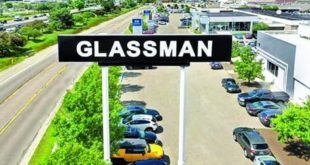
Digital retailing is one of the hottest trends reshaping auto retail. Dealers, vendors and automakers all are vying to help customers finish at least part of their vehicle purchase outside a showroom.
Yet despite the energy coalescing around digital — and the Amazon-like customer experience comparisons it elicits — there isn’t consensus about what a digital retail experience looks like. That includes where the finance and insurance process fits in and whether it’s required to be electronic for a shopper to have truly bought a car online.
Consensus is elusive in part because dealers are adopting pieces of digital retailing at different paces — some are in early stages of turning on “buy now” functions, while others have gone as far as to deliver vehicles to consumers’ homes. There’s also no uniform solution or strategy in the market, some dealers and third-party providers told Automotive News.
There is agreement generally around the idea that customers increasingly want a car-buying experience that matches what they’re accustomed to from nonautomotive retailers — seamless, convenient, quick, efficient — and dealerships have to evolve to deliver it.
“There’s a lot of confusion on what digital retailing means,” said Jim Houston, managing director of consumer lending and automotive finance for J.D. Power.
“When you talk about digital retailing,” Houston added, “you’re really thinking, ‘How can I engage the customer in the top of the shopping funnel from a digital perspective? What gives you the best experience?’ ”
On the F&I side, that virtual experience is going beyond payment modeling and financing preapprovals to allowing consumers to select extended warranties and maintenance add-on products upfront, rather than at the end of the transaction in a finance office. Some dealers and F&I product vendors have said anecdotally that this has led to more sales rather than fewer.
There’s some data to support those observations. A 2017 Cox Automotive study noted that customers who were aware of F&I products ahead of time were more likely to purchase them and suggested that dealerships increase the amount of product information they give consumers online.
An updated report last year found that filling out paperwork and negotiating vehicle price were customers’ top frustrations with the buying process, but less than 1 in 10 customers took those steps online, “likely because access and availability of these options are currently limited,” Cox wrote.
“The opportunity there from an F&I perspective is being able to personalize that experience,” said Jennifer Reid, a vice president and automotive marketing and strategy lead for Equifax, which rolled out a digital retailing product suite at the NADA Show last month in Las Vegas.
“The value prop of what you’re selling in the F&I [office] doesn’t change because you’re suddenly doing it online,” Reid added. “If you’re selling the solutions, educating consumers and giving them the option, it shouldn’t be an issue.”
Regardless of how digital retailing is defined, “the F&I piece remains the most vexing,” said Rick Kurtz, senior vice president of distribution for Protective Asset Protection, an automotive F&I solutions provider.
That’s because the financing process includes many variables that change depending on the customer’s market and eligibility, such as rebates and state and local taxes, Kurtz said. State laws requiring consumers to physically sign documents also means that transactions often have to be finished in person, rather than virtually.
“I wish it was a singular digital retail experience out there and we could tell you how we fit in,” he said.
Some say digital retailing is simply retailing and doesn’t need to be qualified.
Modal, which provides white-labeled digital auto retailing platforms to dealerships, uses words such as “online purchase” or “transaction” to mirror the language outside automotive, CEO Aaron Krane said.
“You can have digital retailing without an F&I element. I just think it’s suboptimal,” Krane said.
Add-on products can be offered multiple times throughout a vehicle transaction, he said, including at the end if a customer chooses not to purchase earlier in the process.
“Every moment is a good moment to offer F&I products,” Krane said. “The key is simply offering them while the buyer feels like they’re in control.”
Christian Storm, training and development manager for Planet Hyundai/Genesis of Golden and Planet Honda in Golden, Colo., said that when his dealerships began using digital retailing provider Roadster, the perception among some finance managers was that F&I revenue would decrease because customers would balk once they saw the extra cost the products would add to their payment.
That didn’t happen, Storm said. Instead, finance managers increased their income per deal, and the average transaction time went down on average by roughly 20 minutes.
“No one is afraid of the tool anymore because they comprehend what it does,” he said.
Much of the conversation about digital retailing today revolves around omnichannel, or a seamless transition among all the ways a consumer might buy a car, whether online or in a showroom.
Digital retailing is intended to digitize the entire sales process to create a better experience, Roadster CEO Andy Moss said.
“I do think the F&I office is a key part of the sales process. That’s where a lot of the profitability for the dealer is coming from,” Moss said. “I’m kind of in the camp [of], you’re not really generating much more than sort of a super lead if you’re not able to go deep” into financing.
Roadster leaders added that rather than simply allowing electronic signatures, a bigger pain point for customers could be alleviated by creating more F&I product awareness earlier in the process, whether they buy the products online or in person.
Digital transactions are still catching on with consumers. Jim Ellis Automotive Group in Atlanta has offered digital transactions since early 2019. The group, which sells roughly 25,000 vehicles annually from 16 stores representing 14 brands, includes F&I product pricing and purchasing abilities in its digital retailing process, Jim Ellis Express Way, through its partnership with F&I software company Darwin Automotive.
“Everything is 100 percent transparent. It even figures out their taxes, their trade-ins and allows them to look into F&I products, videos,” said Mike Power, the group’s F&I director. “They basically can do all of this from their iPhone or their Samsung and not even talk to the dealership.”
Yet even though the group has the ability to meet customers online, “very few” actually go through an entirely digital transaction, said Stacey Ellis Hodges, vice president of group support operations. Out of 100 clients who might start the retail process digitally, typically only one will complete the entire process online, Hodges said.
“Most people jump off at some point, shoot us an email, or say, ‘Hey, can you call me on this?’ ” she said.
Toyota Motor North America and Toyota Financial Services are working to add F&I functions to the automaker’s SmartPath sales tool, which is being tested at 10 dealerships and is expected to roll out nationally in April. Dealers have said they are optimistic about the tool.
Shoppers initially will be able to use SmartPath to choose a vehicle and get pricing and payment details, including taxes and fees, but it doesn’t yet allow customers to add F&I products, said Matthew Heydon, a general manager of retail transformation for Toyota. Once that capability is ready this year, he said, dealers will be able to choose whether to enable that function to fit their stores.
Marrying the online shopping component with the buying process is necessary to create a consistent retail and financing experience, he added.
“Everything without that [integration] is lead generation,” Heydon said. “If you haven’t completed the transaction online or [via mobile], you haven’t really bought anything.”
Jackie Charniga contributed to this report.


